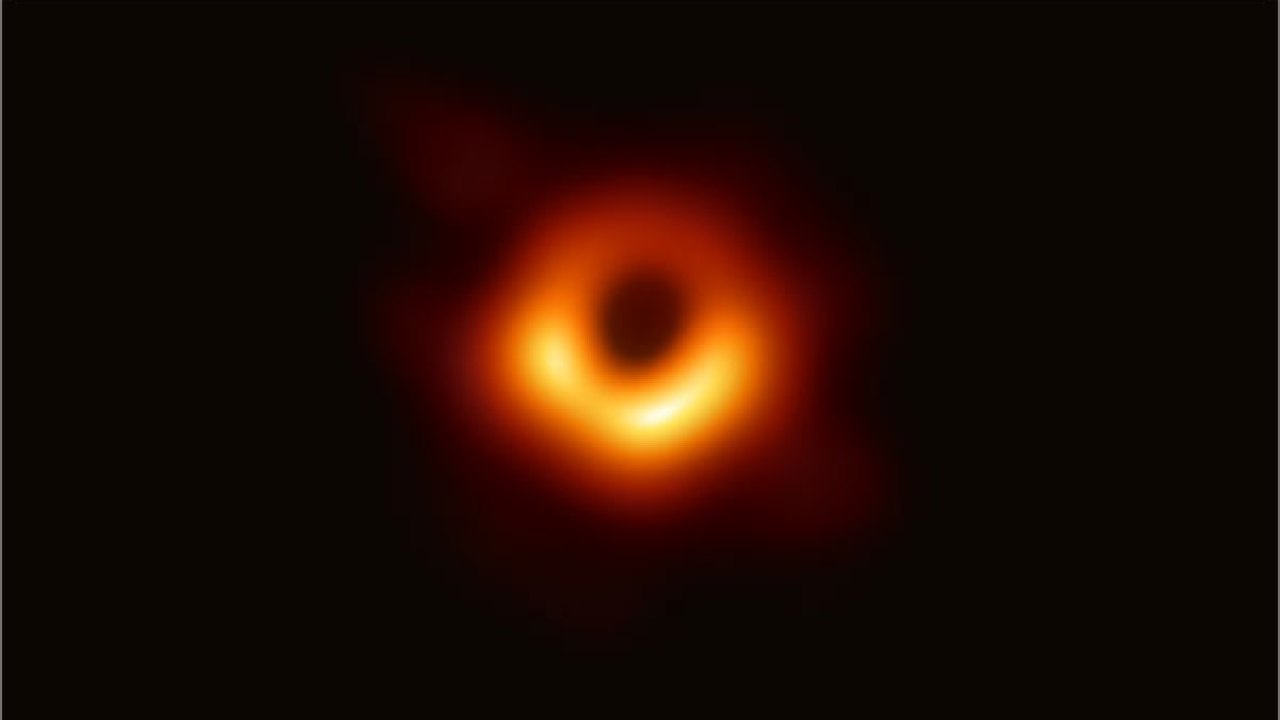The Terrible Precipice Of Knowing: Black Holes, Enlightenment, And The Divine by Elizabeth Glass Turner

There is a moment you stand on the brink, or the brink stands on you. The inexorable draw pulls you in, like gravity, like the current; at the moment you must fight to get away or be drawn in forever, you are the most tempted to pause with quickened breath as you weigh whether the knowledge of what lies on the other side is worth the possibility of your own extinction – before you can say what it is you’ve seen.
“You shall know the truth, and the truth shall make you odd.”
In the quest to see the truth, what if you are blinded? Is a blind woman happy who has lost her sight in order to bear witness to the Beatific vision? Would terrorist Saul have chosen blindness and disorientation to see Christ, or did Christ need to blind Saul temporarily so that he would perceive properly?
Today is an odd moment in human history; scientists have collaborated across continents, in multiple time zones, to set up equipment on the world’s mountains so that humanity can use plastic, metal, and glass tools that fit in your pocket or sit on your desk to communicate with each other almost instantaneously and see images of a black hole. Computing isn’t identical to information and information isn’t identical to knowledge, but today you can pull out a piece of equipment, use a high-powered search engine, type the words, “black hole photo,” and see the results of decades of hard work. Just 150 years ago people learned of the death of their loved one in the U.S. Civil War by checking the newspaper or receiving a letter from the dead person’s friend. It could take weeks, months. Now a mystery in our galaxy is viewable on the rechargeable machine in your pocket.
Black holes are mesmerizing, terrifying, and little understood. Using math, calculations, formulas, equations, scientists guess. What appears to be true is that, in a way, light itself can be sucked down the drain and condensed into a tiny, heavy ball with extraordinary gravitational pull. (Note: this is an inaccurate description of a complex reality by someone who is not a scientist.) What science fiction writers like to play with is the moment – the event horizon – in which light or matter (or a fictional character) can no longer escape the gravitational pull.
You still have time you still have time you still have time it’s too late.
Who can rescue you from knowledge that will be your undoing? No rescue craft can hover at the event horizon, lowering a rope to you.
How can knowledge burn but set you free? There is a knowing that singes you to breaking point, then propels you forward.
Where can I go from your Spirit?
Where can I flee from your presence?
If I go up to the heavens, you are there;
if I make my bed in the depths, you are there.
If I rise on the wings of the dawn,
if I settle on the far side of the sea,
even there your hand will guide me,
your right hand will hold me fast.
If I say, “Surely the darkness will hide me
and the light become night around me,”
even the darkness will not be dark to you;
the night will shine like the day,
for darkness is as light to you.
Light, we are told, cannot escape the power of a black hole.
Perhaps not.
Or at least, perhaps not for a long, long time, until that condensed matter explodes outward – propelling, igniting, cascading.
Jesus swallowed up the darkness that appeared to swallow him. The darkness came close; the darkness thought that Jesus Christ stood on the event horizon, and fell in.
On this mountain he will destroy
the shroud that enfolds all peoples,
the sheet that covers all nations;
he will swallow up death forever.
The Sovereign Lord will wipe away the tears
from all faces;
he will remove his people’s disgrace
from all the earth.
The Lord has spoken. – Isaiah 25:7-8
What is Holy Week about? It is about Jesus letting himself be drawn into a black hole. It is about the sky going dark, the earth shaking. It is about hours of eerie silence – hours and hours. It is about hope vanishing in the blink of an eye.
It is about a black hole quivering. It is about a black hole beginning to get smaller. It is about the Light of the World swallowing the heavy darkness with such inescapable draw that the darkness cannot escape. It is about the Light of the World entering a hole of black darkness and absorbing it from the inside.
The light shines in the darkness, and the darkness has not overcome it.
Standing on the brink, looking into the abyss, Judas Iscariot and Pontius Pilate stood.
The inexorable draw pulls you in, like gravity, like the current; at the moment you must fight to get away or be drawn in forever, you are the most tempted to pause with quickened breath as you weigh whether the knowledge of what lies on the other side is worth the possibility of your own extinction – before you can say what it is you’ve seen.
What does it feel like to betray the Light? Judas held that knowledge. So too did Pilate. And it swallowed them whole as they were consumed by the ever-hungry darkness.
Standing on the brink, looking into the abyss, Mary the mother of James, Joanna, Mary Magdalene, and other women stood, peering into an open, empty, echoing tomb. Comprehension failed them. Lightning-colored beings shouted nearby from an eternity away. Fight or flight kicked in. Hope is deadly, and they did not want to die.
At the moment you must fight to get away or be drawn in forever, you are the most tempted to pause with quickened breath as you weigh whether the knowledge of what lies on the other side is worth the possibility of your own extinction.
Had Light escaped the darkness?
What does it feel like to witness the Light? Mary and Joanna held that knowledge. So too did Magdalene. And it swallowed them whole as they were consumed by the ever-lifegiving Light.
It is not the brink that is the problem; it is not the cliff’s edge, the event horizon; it’s whether you’re jumping into darkness or into Light. Holy Week brings us to the brink, reminds us of what it feels like to peer over the edge into humanity’s bent toward self-destruction, pushes us toward letting go of all safety railings as we free-fall into the Light of the World.
